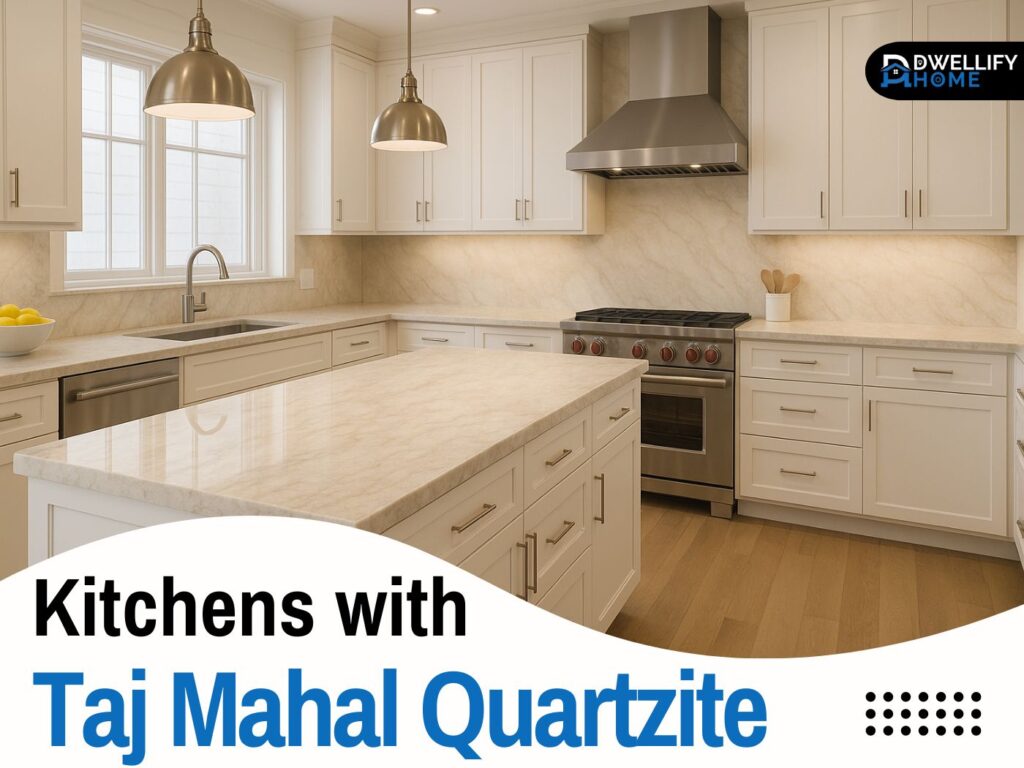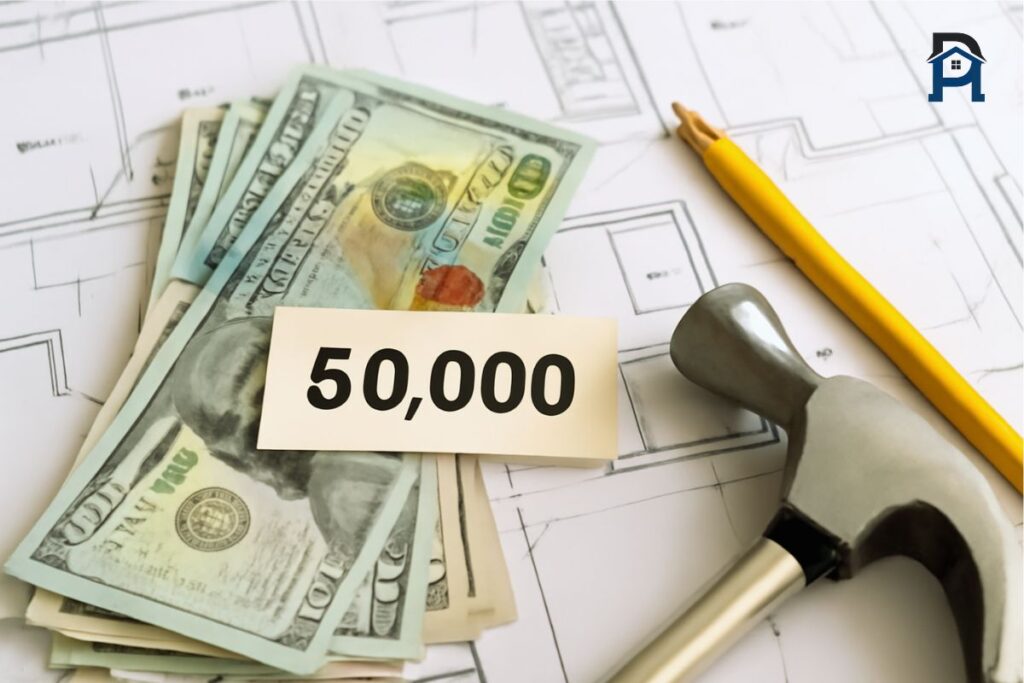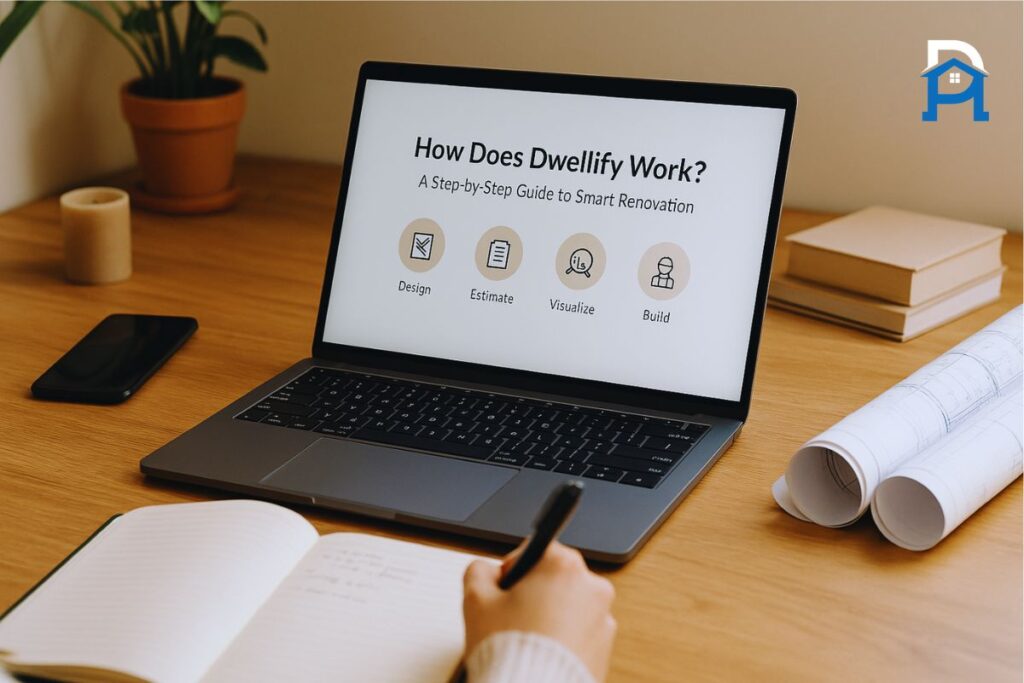Thinking about upgrading your kitchen? If you’re looking for a countertop that’s both timeless and practical, Taj Mahal quartzite might just be your perfect match. This natural stone has been quietly taking over kitchen design trends, and for good reason. It’s durable, versatile, and looks absolutely stunning in almost any style of kitchen.
Here’s the thing: kitchens with Taj Mahal quartzite aren’t just about looks. They’re about creating a space that feels warm, welcoming, and long-lasting. Whether you’re dreaming of a bright modern space or a cozy farmhouse kitchen, this stone blends right in. Let’s walk through everything you need to know — from cost and cabinet pairings to design inspiration and real-world reviews.
Snippet-Ready Definition:
Kitchens with Taj Mahal quartzite feature creamy, durable natural stone countertops that combine elegance and strength. Loved for their warm tones, they suit modern, classic, and farmhouse designs while adding long-term value to homes.
Mission Statement
At Dwellify Home, our mission is to guide homeowners with practical, expert-backed design advice that makes every space both beautiful and functional. We aim to simplify complex design choices, offering friendly, trustworthy insights so readers feel confident and inspired when creating kitchens with Taj Mahal quartzite countertops.
What is Taj Mahal Quartzite?
Taj Mahal quartzite is a natural stone quarried mainly in Brazil. Unlike quartz (which is engineered), quartzite is formed naturally when sandstone undergoes intense heat and pressure. The result is a stone that’s harder than granite but visually soft, with creamy beige tones and delicate veining.
So, what color is Taj Mahal quartzite? Most slabs lean toward soft whites, warm creams, and subtle gold undertones. Some even have faint gray or taupe streaks, giving each slab a unique personality. That’s part of the charm — no two kitchens with Taj Mahal quartzite countertops will ever look exactly the same.
The best part is that it’s not just pretty. Quartzite is highly resistant to heat and scratches, which makes it an ideal choice for busy kitchens where cooking, entertaining, and daily life all collide.
Why Choose Taj Mahal Quartzite for Your Kitchen?
First off, the aesthetic appeal. Taj Mahal quartzite has a neutral warmth that works with nearly every design style. Paired with white cabinets, it feels crisp and clean. With darker cabinetry, it turns into a dramatic, upscale centerpiece. And with natural wood, it creates a cozy, organic vibe.
On top of that, it’s a stone that can truly last. While marble stains easily and granite sometimes feels heavy and dated, quartzite balances both beauty and performance. Homeowners often say they love how it gives them the look of marble without the constant worry of etching and staining.
You might be wondering, is Taj Mahal quartzite outdated? The short answer is no. Warm neutrals and natural textures are actually leading kitchen design trends in 2025. Instead of fading out, Taj Mahal quartzite is becoming a “safe classic” — a material you won’t regret five years down the line.
Design Inspiration: Kitchens with Taj Mahal Quartzite
Here’s where the fun begins. Let’s look at a few styles and how Taj Mahal quartzite fits in:
- Classic kitchens: Pair Taj Mahal countertops with wood cabinets, traditional hardware, and a tiled backsplash. The creamy stone balances darker tones and keeps the space bright.
- Modern and minimalist kitchens: Think clean white cabinets with Taj Mahal quartzite countertops. Add sleek stainless steel appliances and matte black hardware, and you’ve got a space that’s both sharp and inviting.
- Bold kitchens: Taj Mahal quartzite works surprisingly well with navy or even black cabinetry. Add a waterfall edge on the island, and you’ll have a show-stopping centerpiece.
- Creative touches: Don’t just limit yourself to countertops. Taj Mahal quartzite makes stunning full-height backsplashes, island cladding, and even accent walls.
Guess what — even small kitchens benefit from Taj Mahal. Because of its light tones, it reflects light beautifully, making tight spaces feel bigger.
Cabinet, Paint & Material Pairings That Work
One of the top questions people ask is: what color cabinets go with Taj Mahal quartzite? Here are some tried-and-true pairings:
- White or off-white cabinets: Clean, timeless, and a perfect fit.
- Warm greys or greige: Subtle and modern without feeling cold.
- Natural woods: Oak, walnut, and maple highlight the stone’s organic look.
- Dark cabinets: Navy, espresso, or even charcoal for bold contrast.
Now, what about paint? Since Taj Mahal quartzite has warm undertones, it pairs best with soft whites, beige tones, or warm greys. If you love accent walls, muted sage green or dusty blue can add just the right amount of color without clashing.
Here’s a quick tip: avoid super cool whites or bright icy greys. They can make Taj Mahal quartzite look yellowish in comparison. Stick to warm, earthy shades and you’ll be safe.
Cost, Pricing & Value Considerations
Let’s talk numbers. Is Taj Mahal quartzite expensive? Generally, yes — it’s on the higher end of countertop options. Depending on where you live, the cost can range from $90 to $150 per square foot installed. Factors like slab size, thickness, and custom edges can push that number higher.
But here’s the thing: while it may cost more upfront, it’s also an investment. Kitchens with Taj Mahal quartzite often increase home resale value because buyers see it as a luxury, long-lasting feature. Think of it as beauty that also pays you back.
Pricing also depends on availability. Since Taj Mahal quartzite comes from Brazil, shipping and import fees can add up. If you’re outside the US, check local stone suppliers for pricing differences. And if budget is a concern, you can explore similar-looking quartz options, but keep in mind they won’t have the exact natural variation or prestige.
Installation & Care Best Practices
Choosing Taj Mahal quartzite means choosing a slab carefully. Because each piece is unique, you’ll want to view the full slab before buying. Pay attention to veining and undertones — one slab might lean more gray, while another is more golden.
When it comes to installation, edge profiles can make a big difference. Waterfall edges are popular right now, especially for islands, while eased or mitered edges offer a clean, modern look.
As for maintenance, quartzite does need sealing, usually once a year, to protect it from stains. Daily care is simple — mild soap and water is enough. Avoid harsh chemicals or abrasive pads. With a little attention, your Taj Mahal quartzite countertops will stay gorgeous for decades.
Real-World Reviews & Expert Insights
Homeowners who’ve installed Taj Mahal quartzite often rave about how it transformed their kitchens. They love that it has the elegance of marble without the constant stress of spills. Many mention how the warm tones feel inviting and cozy — perfect for a space that’s truly the heart of the home.
Designers also recommend Taj Mahal because it’s versatile. They often show “Taj Mahal quartzite photos with white cabinets” to clients who want timeless kitchens. Contractors, on the other hand, highlight its strength and durability, noting that it holds up well in high-traffic family homes.
The one caution experts share: always buy from reputable suppliers. There are lower-grade stones that get mislabeled as Taj Mahal quartzite. A trustworthy supplier will let you inspect full slabs and explain their provenance.
Pros & Cons of Taj Mahal Quartzite in Kitchens
Pros:
- Timeless look with warm undertones
- Extremely durable and heat resistant
- Works with a wide range of design styles
- Adds resale value to homes
Cons:
- Higher upfront cost
- Needs regular sealing
- Natural variation means you must choose slabs carefully
Here’s a tip: if you love the look but not the price, consider using Taj Mahal quartzite just for the island, and a complementary material like quartz on the perimeter counters. It’s a smart way to balance budget and beauty.
Future Trends & Design Predictions
Will Taj Mahal quartzite stand the test of time? All signs point to yes. Warm neutrals, natural materials, and subtle textures are dominating 2025 kitchen trends. Taj Mahal quartzite hits all three.
In fact, designers predict more homeowners will use it beyond countertops. Expect to see it in full backsplashes, integrated sinks, and even as a dramatic feature wall behind open shelving. With its versatility and understated luxury, it’s not going out of style anytime soon.
Comparison Table
Taj Mahal Quartzite vs Other Countertop Materials
| Feature | Taj Mahal Quartzite | Marble | Granite | Quartz (Engineered) |
| Appearance | Creamy, warm, subtle veins | Elegant, dramatic veins | Speckled, bold patterns | Uniform, consistent look |
| Durability | Very high, heat resistant | Softer, stains easily | Strong, durable | Highly durable, non-porous |
| Maintenance | Needs annual sealing | High maintenance | Moderate | Low maintenance |
| Cost (per sq. ft.) | $90–$150+ | $60–$120 | $40–$100 | $60–$120 |
| Timeless Appeal | Classic, versatile | Luxurious but delicate | Traditional, earthy | Modern, practical |
Quick Bullet List: Cabinet Colors That Match Taj Mahal Quartzite
- White or off-white for a bright, timeless look
- Warm greys or greige for soft elegance
- Natural woods like oak or walnut for organic warmth
- Navy or charcoal for bold, dramatic kitchens
Additional Expert Tips
- Sourcing slabs: Always see the slab in person to make sure it matches your vision.
- Comparisons: Taj Mahal quartzite vs marble → quartzite is harder, more resistant. Versus engineered quartz → quartzite has unmatched natural beauty.
- Sustainability: As a natural stone, Taj Mahal quartzite has a long lifespan, which reduces the need for replacements.
- Regional pricing: If you’re outside major US markets, factor in transport and import costs before committing.
Conclusion
So, should you consider Taj Mahal quartzite for your kitchen? Absolutely. It’s beautiful, strong, and endlessly versatile. Yes, it costs more than some alternatives, but what you get in return is a kitchen that feels elegant and welcoming for years to come.
Here’s the takeaway: kitchens with Taj Mahal quartzite aren’t just a trend. They’re a timeless design choice that blends luxury with practicality. If you’re planning a remodel, it’s worth visiting a stone yard to see slabs in person. Trust me, once you see Taj Mahal quartzite up close, you’ll fall in love.
FAQ
What color is Taj Mahal quartzite?
It’s a creamy white stone with warm beige or gold undertones and subtle veining.
Is Taj Mahal quartzite expensive compared to other stones?
Yes, it’s on the higher end, usually $90–$150 per square foot installed.
What color cabinets go best with Taj Mahal quartzite?
White, off-white, warm greys, greige, and natural woods pair beautifully.
Is Taj Mahal quartzite outdated in 2025?
Not at all — it’s still trending and considered timeless.
How do you care for Taj Mahal quartzite kitchen countertops?
Seal once a year, clean daily with mild soap and water, and avoid harsh cleaners.
Disclaimer
This article is intended for informational purposes only. While we provide design tips, pricing insights, and expert-backed advice, actual costs and results may vary based on location, supplier, and installation. Always consult a qualified contractor or stone supplier before making final decisions for your kitchen project.

I’m Bilal, the founder of Dwellify Home. With 6 years of practical experience in home remodeling, interior design, and décor consulting, I help people transform their spaces with simple, effective, and affordable ideas. I specialize in offering real-world tips, step-by-step guides, and product recommendations that make home improvement easier and more enjoyable. My mission is to empower homeowners and renters to create functional, beautiful spaces—one thoughtful update at a time.




